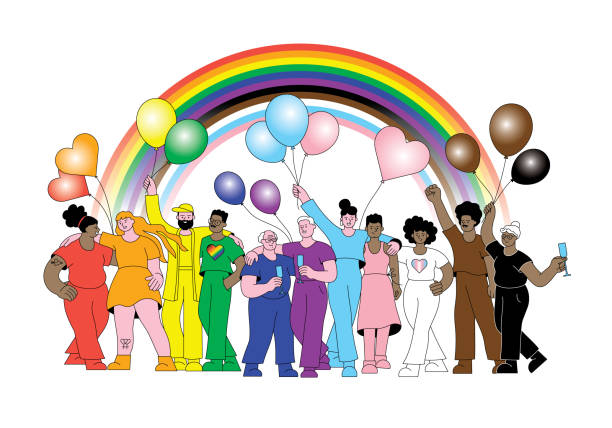
Workplace Diversity and rights
What is workplace diversity?
Workplace diversity and rights is when a workplace employs people with a variety of characteristics. Characteristics can include nationality, age, gender, religion, sexual orientation, disabilities, political beliefs and more. Some characteristics are internal, such as gender. Where some are external and are dependent on a person’s experiences, such as religion or education. Finally there are worldview characteristics, such as political beliefs and culture.
The Diverse Council Australia has found that accommodation and food services, and healthcare and social services, are the industries taking the most action to create a diverse and inclusive workplace. Whereas, manufacturing, construction, retail, information media, and warehousing are the industries taking the least amount of action to diversify their workplace[1].
Needs for inclusion
Diversity is dependent on who is being hired at a business. While that is a fantastic first step, there also needs to be inclusion in order to benefit from diversity. Inclusion occurs when diverse employees feel valued and respected by being allowed to access opportunities and resources. Generally benefitting their work as employees feel more supported in their role and more encouraged to work with their coworkers. Not isolated then dismissed at the first hint of a issue.
To promote inclusivity businesses usually have leaders and employees in senior roles to create safe and welcoming environments for their team and who can facilitate interpersonal relationships. Employers are also more likely to have inclusive training, promote inclusive language, and promote their anti-discrimination policies. Inclusivity can also be seen through designated prayer rooms, bathrooms designed to help disabled employees, and more. Every workplace and industry will have a different amalgamation of inclusive opportunities and resources.
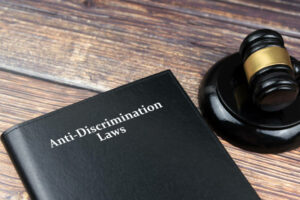
Why do employers want a diverse workforce?
It has been shown that a more diverse workforce has fantastic benefits. The most noticeable benefit is that a diverse workforce will provide new perspectives and ideas. Research has found that a diverse team can improve their team decision results by 60%. Also makes better decisions 87% of the time, and drive decision making at double the speed[2]. This is attributed to the different work, cultural, and personal experiences that are inherent in a diverse workplace.
There is also a link to greater innovation through the amalgamation of new ideas. There can also be new hiring perspectives. Where not everyone is waiting for the next 9-5 role. The world still has to run during the night and other strange times that do not fit the 9-5 expectation. Therefore, hiring employees from all walks of life makes it easier to fit different types of roles.
However, with the benefits that come with a diverse workforce there are also negatives. Most prominently that there can be conflict and discrimination that occurs. In Australia discrimination is when a person or group is treated ‘less favourably’ than another group due to certain characteristics.[3] Conflict naturally occurs between employees who work closely together for hours or in stressful environments. However, how diversity and inclusion is treated can make a great impact on the rate of discrimination and conflict in a business. Therefore, both positives and negatives of diversity will be considered by employers.
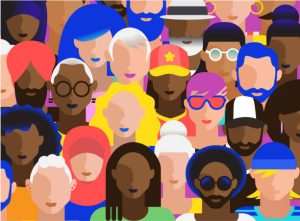
Age and related issues
Age is definitely a factor when discussing workplace diversity. It is a characteristic that affects every workplace and industry and comes with a large warning of stereotypes and discrimination. Often in the form of young employees not having enough experience or older employees not being able to adapt to newer, faster, technology or practices. It has been found that 1 in 5 workers (20.7%) of employees over 50 have been a victim of age discrimination which has doubled since 2016 (9.6%).[4] However, any age group can be treated worse due to their age most often in the form of rude comments or isolation.
Despite the challenges, there are many benefits to an age diverse workforce. It has been found that a more age diverse workforce increases overall productivity and reduces employee turnover. This could be due to older employees (above 45 years old) tend to stay within a business for longer than younger employees who are entering the workforce.
Younger employees may be persuaded to stay within a business when they see the benefits of long service. Or are less enticed to leave when they do not see their coworkers leaving. Compared to a business where there is high turnover and leaving a business after a short time of employment is almost expected of them. Furthermore, more senior employees can create a mentor-student relationship. Where new or younger employees can learn the ‘tricks of the trade’ and improve their performance quicker than with a training manual or by themselves.
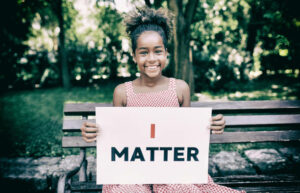
Gender
Gender and gender expression is another diverse characteristic that affects every workforce and industry. It is not common to find a business that comprises the entirety of a single gender, however it does occur. Especially considering male or female dominated industries. For example, 87% of construction workers are male[5], whereas 77.9% of health care and social assistance workers are female[6].
There is a long history of sexist discrimination that stems from women not being allowed to work in the 19th century. There has been a constant fight for equality ever since. Discrimination can happen in the form of rude comments, contributing to the pay gap, not being considered for promotions despite being the most qualified or appropriate. Also being forced to do jobs that are not relevant to a certain role due to gender stereotypes, to name a few examples. Workplace discrimination is usually to the detriment of minority groups, such as females, non-binary, and trans employees.
Despite the history of conflict it is essential to have a gender diverse workforce. All genders have different collective experiences which can be used to contribute different ideas and perspectives to their work. Furthermore, a gender diverse workplace will help serve a gender diverse customer base. Especially in customer heavy industries such as retail and hairdressing, as well as more sensitive (and people based) industries such as health care or security.

Trangender, non-binary and gender minorities
An employee can learn about the experiences of a gender that is not their own, however they cannot understand better than experiencing and understanding their own gender. This can be especially relevant and beneficial for trangender and non-binary employees and customers alike as they are a much smaller minority than males and females, and face specific problems and needs.
Finally, seeing more gender minorities in senior, powerful, roles will entice the greater workforce to work harder. Be more productively when there is a genuine belief that anyone, despite gender, can succeed. Historically, men have been the most popular candidate for powerful and influential roles which has discredited minority genders to try for male dominated roles.
However, demonstrating a genuine performance based company structure and promotion system will force male employees to work harder. As there is a larger pool of candidates for a senior role, and motivate a larger body of the minority groups to work towards senior roles when they know there is a genuine chance for success.
Religion
Religious diversity not only includes the different types of religion, but those who do not believe in religion or atheists. While religious beliefs can affect any workplace or industry, it is most commonly discussed in already religious establishments such as private schooling, some charities, and places of worship. Religion is more nuanced as it is not always as identifiable as someone’s gender or age. In this context different religions rarely intermingle, however having a religiously diverse workplace can provide benefits.
Working beside different religions can help in overall respect for each other as colleagues learn about each other’s different practices and expand their religious knowledge. This is also beneficial when trying to be respectful towards customers of different religions and practices.
The difference of a sale or positive customer relationship/experience can be acknowledging different religious holidays (such as ‘Happy Hanukkah’ for Jewish people). Or religious greetings (such as ‘Assalamu alaikum’ for Muslims). This may be relevant when working in an area with a prominent religious community when you do not practise the same religion.
Employers may acknowledge religion, and to support all religions, because it will support the employee themselves. Religion typically is used to provide spiritual and emotional well-being. By the employer acknowledging and supporting an employee’s religious needs (prayer room or dietary restrictions) there is a greater chance that the employee will feel supported. They will work harder as they are happier and want to demonstrate their gratitude. However, some employers and coworkers will not care or acknowledge religious beliefs at all.
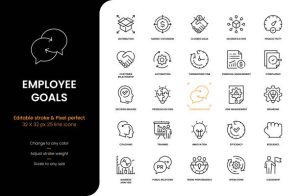
Nationalities – Immigration
Having a culturally and ethnically diverse workplace is one of the most common types of diversity. It can affect a wide range of factors such as communication skills, workplace expectations, work ethic, ability to work with others, and more. Typically the way people are raised in their ethnicity does impact their work skills and expectations.
However, because of certain stereotypes and perpetuated ideas there is a lot of ground to breed discrimination, less favourable treatment, or a toxic work environment. Especially considering that people will immigrate from overseas solely to find better work for themselves or their families. Therefore, there can be challenges when faced with a plethora of ethnicities and areas to accommodate for.
Despite the challenges, having a diverse ethnic workplace can provide some of the biggest benefits. The most predominant advantage is that there will be a greater pool of ideas and skill sets. Furthermore, employees can ensure that the business is being culturally appropriate. Many businesses will try to cater to a certain demographic or bring speciality material for certain holidays. Having employees of different cultures will ensure that the business is culturally literate and respectful.
Customers will not go to a business where they feel disrespected, or even actively advertise the boycotting of a company. Additionally, customers and clients can be more willing or enticed to go to a certain business where they know they will be helped by a person of the same ethnicity. This can be due to language barriers, cultural barriers, or simply for some level of familiarity.
Conflict – is my employer creating an inclusive workplace?
It can be important to consider your own place of employment and recognise where they try to promote diversity and inclusivity, or lack of inclusivity. Consider the ratio of employees in the business. How many males or females are in the business? Is there a higher percentage of a single ethnicity? Additionally, how the company tries to mitigate conflict. Many businesses will enforce anti-discrimination training and policies. Teaching employees how to be culturally away or to be mindful of certain discriminatory language.
Often promoting inclusive or neutral language. Also consider if your employer provides any additional resources or flexibility. This could include but is not limited to having a designated prayer room, easily accessible buildings and bathrooms to accommodate for disabilities. Or provide flexible working hours when employees are fasting, have doctors appointments, or other important commitments. If there are ways for your employer to better demonstrate diversity and inclusivity then it is always important to complain and fight for advocacy.
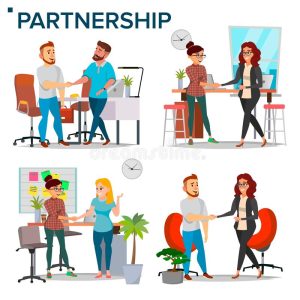
Good versus toxic workplace.
A good workplace will consider the needs and requirements of their employees. Especially when certain needs, support, flexibility is asked of an employer. A good employer will listen and try to reasonably accommodate. They will consider how conflict may arise and try to proactively fight against discrimination or bullying and provide mitigating resources. If a conflict does arise then a good employer will provide mediation or other remedies.
Especially working with a functional and helpful HR department. Not just consider their minimum legal obligations but how to truly support their employees. Because supported and respected employees will produce the greatest results, will work the hardest, and promote their business in a positive way.
However, not all workplaces will go above and beyond. There are toxic workplaces that will do their basic legal requirements, and sometimes not even recognize their legal obligation to provide a safe working environment. A toxic workplace will not support their employees. Particularly ignoring conflict and allowing discrimination and bullying to grow despite continuous complaints. Not all businesses are in a position to provide additional resources or spend funding on anti-discrimination training.
That does not mean it is a toxic or bad workplace. However, a toxic workplace will help contribute to workplace discrimination, stereotyping, bullying, and harassment by not trying to help in circumstances where it does arise or trying to prevent it from happening again.
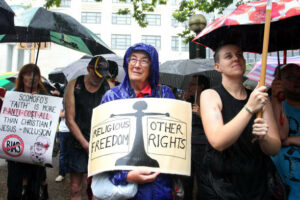
What happens if I am discriminated against?
If you are being discriminated against and have been treated less favorably than other employees due to certain characteristics then there are options you can take. The first step is to always complain about how you are being treated to a HR department, manager, boss, or someone else in a senior role. A business cannot help to fight against discrimination unless they are aware it is occurring. If you have complained and the complaints have been ignored or dismissed then you can seek help at the Fair Work Commission. Discrimination is outlawed and employees are protected under s 351 of the Fair Work Act 2009 (Cth).
The Fair Work Commission has a General Protections (not involving dismissal) claim, also known as an F8C form, or General Protections (involving dismissal), an F8 form, that can be lodged. Depending on your employment status with the business, the form allows the Applicant to bring their employer into a negotiation to ask for compensation for being discriminated against.
This is on the basis that you have exercised your workplace right to complain about how you are discriminatorily treated at work and the employer has taken adverse action against you by not responding to the complaint. Allowing the treatment to continue and forcing you to continue to be treated less favorably. Through this claim you can ask for financial compensation, as well as ask the employer to enforce anti-discrimination policies to prevent future discriminatory taking place.
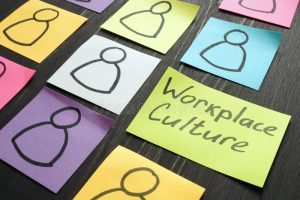
Conclusion to: Workplace Diversity and rights
I hope “Workplace diversity and rights” was inspirational for you. Want to discuss any aspects of the article or your workplace give a call, happy to chat. It’s always helpful to be up to date what’s going on in the workplaces and the wider work community. We are A Whole New Approach are not employment lawyers but the nations leading workplace advisors and commentators.
AWNA are very current with what’s going out there in Fair work Australia and the Fair work Commission, different equal opportunity commissions and like tribunals. (another example is electic vehicle charging rights we are arguing for). AWNA make it our business to know what’s going on. We are not lawyers. We are proud of our staff and the outcomes we get for our clients.
Ring us for free, confidential advice, we keep it real, honest and to the point. Workplace, investigations, unfair dismissals, general protections, redundancy, whatever it is. We work in all states, including Vic, NSW, ACT
Free call 1800 333 666. prompt, confidential advice
Articles similar to: Workplace Diversity and rights
Cultural diversity-How does lead to dismissal from job?
General protections excising your rights
Freedom of opinion Should i be dismissed from them
Citations for workplace diversity and rights
[1] Diversity Council Australia, The Findings: Leading and Lagging Industry Sectors (Webpage) <https://www.dca.org.au/inclusion-at-work-index/findings/leading-lagging-industries>.
[2] Cloverpop, Learn How Inclusion + Diversity = Better Decision Making At Work (Webpage, 2021) <https://www.cloverpop.com/hacking-diversity-with-inclusive-decision-making-white-paper?utm_campaign=Forbes&utm_source=Forbes&utm_medium=Forbes%20Hacking%20Diversity%20White%20Paper>.
[3] Australian Human Rights Commission, Discrimination (Webpage) <https://humanrights.gov.au/quick-guide/12030>.
[4] Jess Bell, Ageism in Australia on the rise as 20% of employees report encounters with age discrimination (Webpage, 9 October 2021) <https://www.hcamag.com/au/news/general/ageism-in-australia-on-the-rise-as-20-of-employees-report-encounters-with-age-discrimination/312676>.
[5] Women’s Agenda, ‘I would not be respected’: The male-dominated construction sector must engage with young women (Webpage, 23 February 2022) <https://womensagenda.com.au/latest/i-would-not-be-respected-the-male-dominated-construction-sector-must-engage-with-young-women/#:~:text=But%20construction%20is%20also%20the,for%20Australia’s%20gender%20pay%20gap>.
[6] Ljubica Gjorgievska , 25+ Women in the Workplace Statistics From Australia [2022] (Webpage, 24 March 2022) <https://takeatumble.com.au/insights/lifestyle/women-in-the-workplace-statistics/#:~:text=Health%20Care%20%26%20Social%20Assistance%20>.






